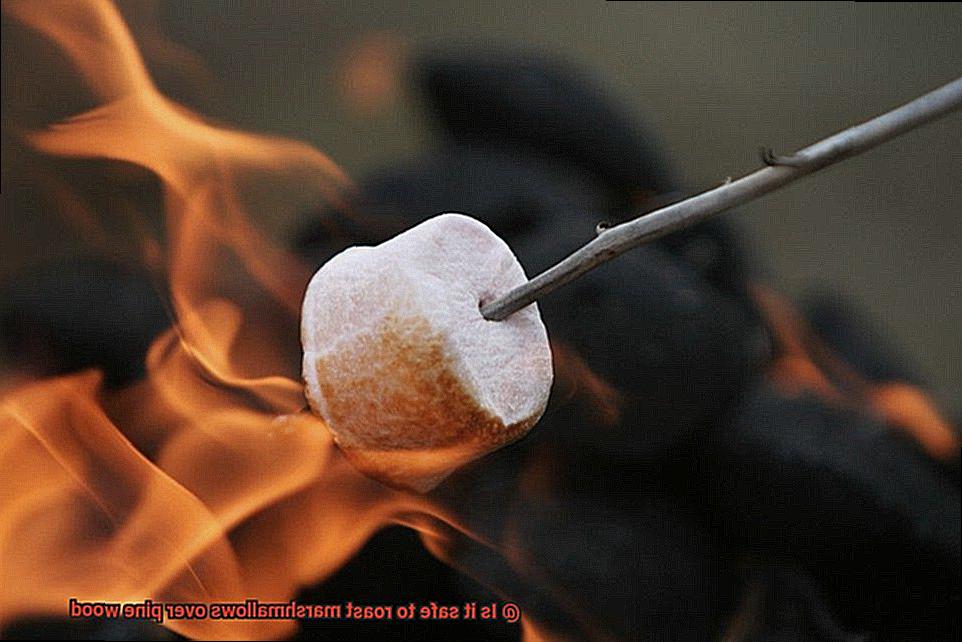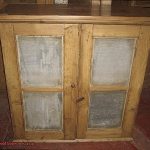When was the last time you indulged in the gooey goodness of roasted marshmallows?
The tantalizing aroma, the sizzling sound, and the warm glow of the fire create an unforgettable experience. But, have you ever questioned whether it’s safe to roast marshmallows over different types of wood?
Particularly, is it okay to use pine wood? This question has been a hot topic among campers, hikers and experts alike.
Pine wood is a popular choice for roasting marshmallows since it’s readily available in most forests. However, it’s also notorious for producing excessive smoke and sparks that could jeopardize your health and safety.
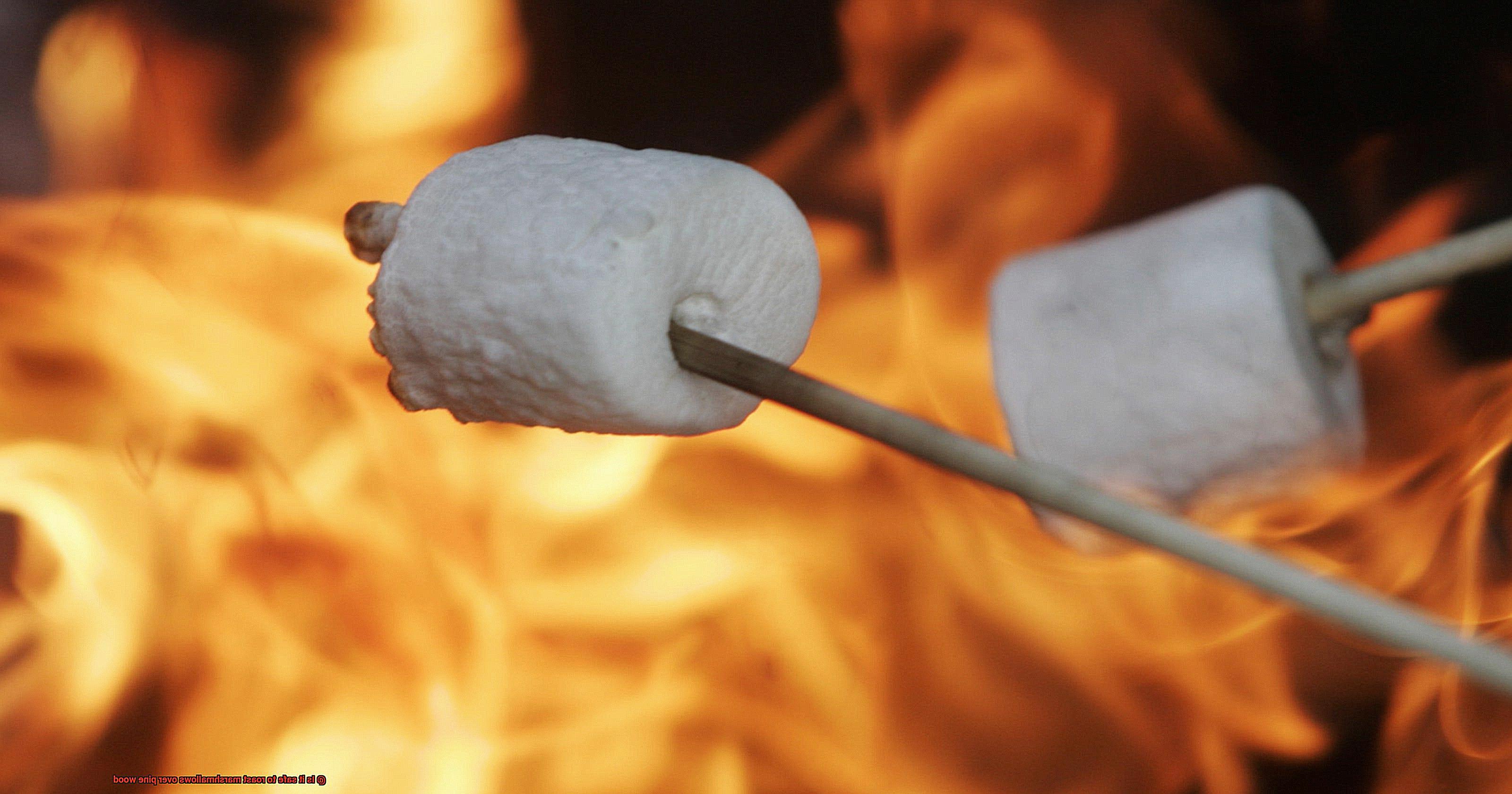
So, can we safely roast our beloved treats over pine wood? In this blog post, let’s weigh up the advantages and disadvantages of using pine wood for roasting marshmallows.
So grab your backpacks and join me on this adventure.
Contents
The Risks of Roasting Marshmallows over Pine Wood
Roasting marshmallows over an open fire is a beloved pastime that brings friends and family together. However, not all woods are created equal when it comes to roasting marshmallows. Pine wood, in particular, has been a topic of debate when it comes to its safety for roasting marshmallows.
One of the biggest risks associated with using pine wood to roast marshmallows is its high resin content. The resin in pine wood can cause the wood to pop and throw sparks when burned, which can be dangerous as hot sparks can fly out of the fire and cause burns or start a fire. Moreover, the bitter taste created by the resin can ruin the delightful flavor of the marshmallow.
But that’s not all. Burning pine wood can also release harmful chemicals into the air. The high levels of resin in pine wood can produce creosote, a toxic substance that can build up in chimneys and lead to chimney fires. Inhaling the smoke from burning pine wood can also cause respiratory problems and irritation to the eyes, nose, and throat.
To safely roast marshmallows over a pine wood fire, there are some important guidelines to follow. Firstly, it’s vital to use only dry pine wood that has been aged for at least six months. This helps reduce the amount of resin in the wood and decreases the risk of excessive smoke or flames. Secondly, it’s crucial to keep a close eye on the fire while roasting marshmallows and never leave it unattended.
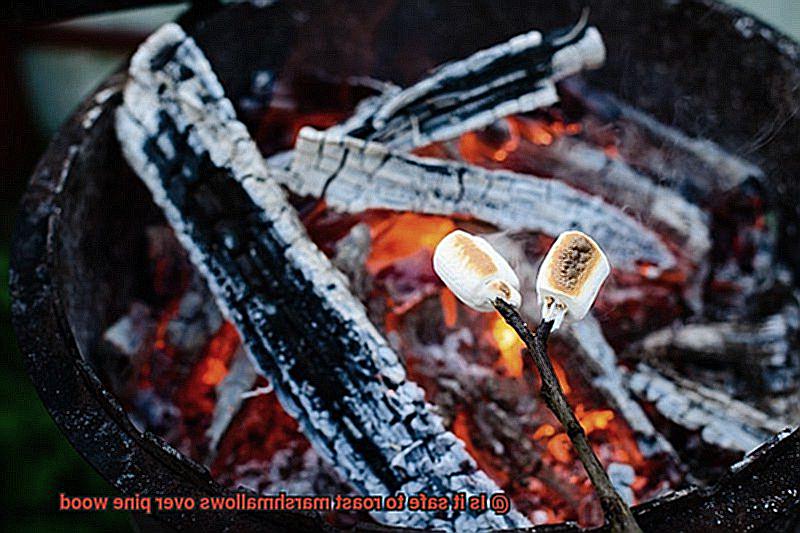
Using a grill or skewers to roast marshmallows instead of placing them directly on the flames can also reduce the risk of burns or injuries. If you’re uncomfortable with using pine wood, hardwoods such as oak or maple are excellent alternatives that provide a safer and more enjoyable roasting experience.
How to Ensure Safety When Roasting Marshmallows over Pine Wood
Roasting marshmallows over a campfire is a beloved outdoor activity, but using pine wood for your campfire requires extra caution. Pine wood contains sap that can ignite and cause a sudden flare-up, which can be dangerous if not handled properly. To ensure that you are roasting marshmallows safely over pine wood, here are some tips to follow:
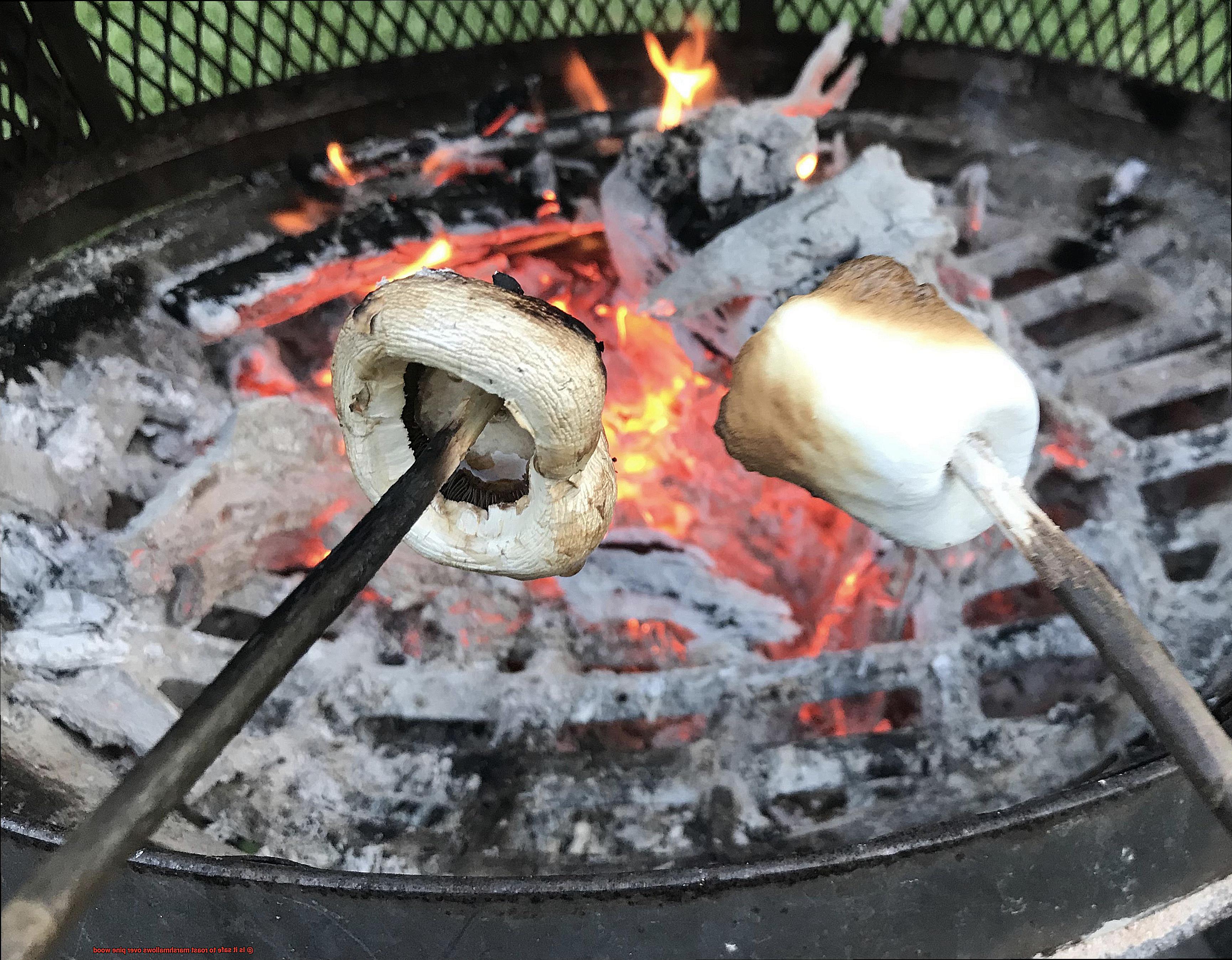
- Use dry and aged pine wood: Freshly cut pine wood contains a lot of sap, making it more prone to causing flare-ups. Dry and aged pine wood will burn more evenly and produce less smoke. It’s best to store your pine wood in a dry area for at least six months before using it for your campfire.
- Use a fire pit or designated campfire area: This helps contain the fire and prevents it from spreading to surrounding areas. Always check with local fire regulations and obtain any necessary permits before starting a fire.
- Keep a bucket of water or sand nearby: In case of an emergency, this will allow you to quickly extinguish any flames that may get out of control. Remember that safety comes first.
- Use long-handled roasting sticks or skewers: This helps keep your hands away from the flames and reduces the risk of burns. We recommend using metal skewers as wooden ones can absorb resin and other chemicals from the pine wood.
- Supervise children and pets at all times: They should be kept at a safe distance from the fire and instructed on how to safely roast marshmallows. Kids love this activity, but they need to be aware of the risks involved.
When it comes to roasting marshmallows over pine wood, safety should always be your top priority. Remember that pine wood can release resin, which contains harmful chemicals that can be dangerous when breathed in or ingested. Therefore, taking certain precautions is essential to ensure that the marshmallows are roasted safely.
Dangers of Inhaling Creosote from Burning Pine Wood
It’s a classic summertime activity that brings back fond memories and creates new ones. But did you know that burning pine wood can produce creosote, a toxic substance that poses significant health risks to those who inhale it? As an expert on this topic, I’m here to give you the lowdown on why this toxic substance should be avoided at all costs.
Let’s start with the basics: what is creosote, and how does it form? Creosote is a dark, oily substance that forms when wood is burned at high temperatures. It can coat the inside of chimneys and fireplaces, increasing the potential health risks for those who inhale it. When burning pine wood, flames can spread easily, causing the wood to burn at higher temperatures and produce more creosote.
Inhaling creosote can lead to respiratory problems, including lung cancer and other serious health issues. Children are particularly vulnerable to these risks due to their developing lungs. Prolonged exposure to creosote can also cause skin irritation and even chemical burns if it comes into contact with skin. If ingested, creosote can cause vomiting, diarrhea, and other gastrointestinal problems.
But don’t let this scare you away from roasting marshmallows altogether. There are ways to minimize the risks associated with inhaling creosote. For example, choose hardwoods like oak or maple when burning wood for your fire pit or grill. These types of wood burn cleaner and produce less creosote than softwoods like pine, spruce, or fir. Using propane-fueled fire pits is another great alternative.
Tips for Choosing the Right Type of Wood for Roasting Marshmallows
Roasting marshmallows over a campfire is an activity that brings people together, but it’s important to choose the right type of wood to ensure a safe and delicious experience. Here are five sub-sections that will help you pick the perfect wood for roasting marshmallows:
Pine wood: A No-Go
Pine wood may seem like a convenient option due to its availability, but it’s not always the safest choice. Pine wood contains resin, which can create sparks and potentially lead to dangerous flare-ups. It’s best to steer clear of pine wood and opt for safer alternatives.
Hardwoods and Fruitwoods: Ideal Options
Hardwoods such as oak, maple, and hickory burn slowly and evenly, providing a consistent heat source for roasting marshmallows. Fruitwoods such as apple or cherry also work well and can add a pleasant fruity aroma to your roasting experience. These woods are ideal options as they offer a steady heat source without compromising on safety or flavor.
Dry Wood: Essential for Safe Roasting
Be sure to choose dry wood that has been properly seasoned. Wet or green wood can create excess smoke and release harmful chemicals into the air. Using dry wood is essential for safe roasting as it reduces the risk of harmful smoke inhalation.
Avoid Treated or Painted Wood: Hazardous to Health
It’s essential to avoid using wood that has been treated with chemicals or paints as these can also release toxins when burned. These toxins can be hazardous to health, so it’s best to avoid them altogether.
Experiment with Different Types of Wood: Discover New Flavors
The type of wood you choose can impact the flavor of your roasted marshmallows. Hickory can add a smoky flavor, while fruitwoods can add a subtle sweetness. Experimenting with different types of wood can be a fun way to discover new flavors and enhance your roasting experience. So, don’t be afraid to try new things and add some variety to your roasting experience.
How to Properly Monitor a Fire While Roasting Marshmallows
Roasting marshmallows over a fire is a beloved pastime for many, but it’s important to prioritize safety while doing so. When using pine wood as your fuel source, there are some extra precautions you should take to ensure that everyone stays safe and sound.
Contain Your Fire
First and foremost, make sure that the fire is contained in a designated fire pit or ring. This will help prevent the fire from spreading and keep it under control. Pine wood contains resin, which can cause the fire to burn hotter and create more sparks than other types of wood. This increases the risk of accidental burns or starting an unintended fire. Therefore, containing the fire is a crucial step towards safety.
Keep a Vigilant Eye
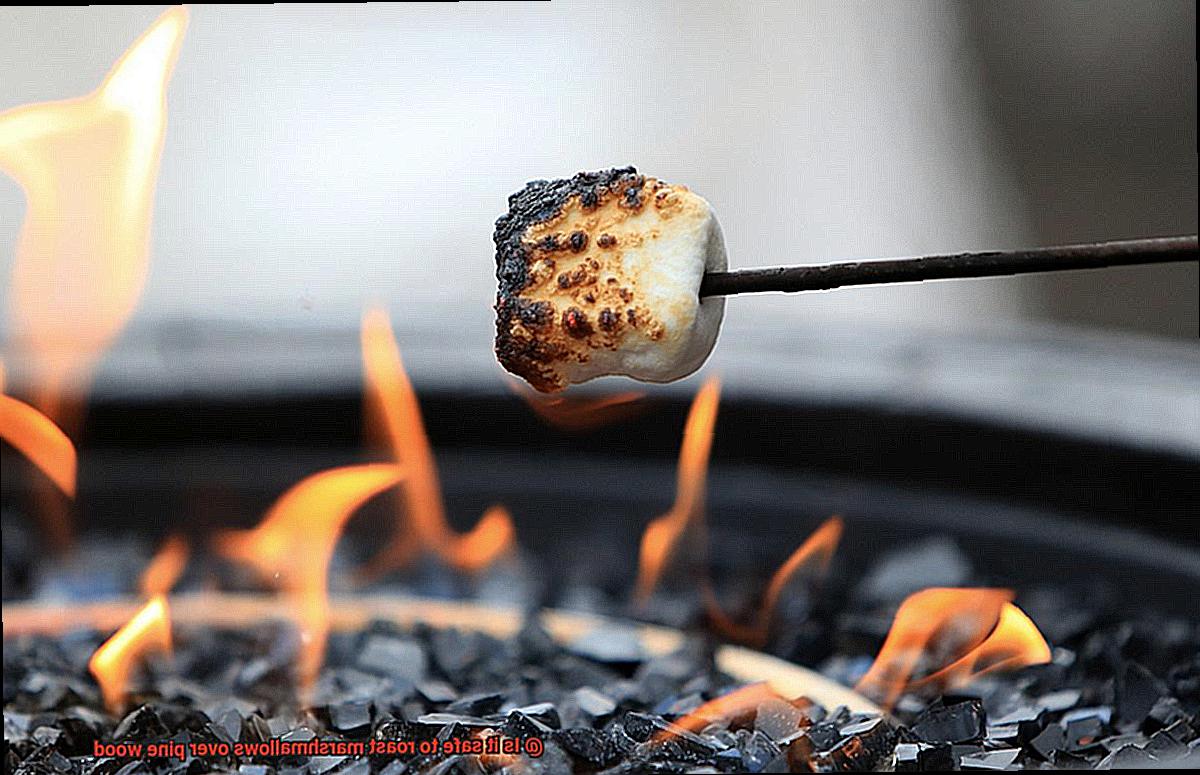
Never leave the fire unattended, especially when roasting marshmallows. Keep a close eye on the flames and embers at all times. If the fire starts to get too hot or sparks start flying, it may be time to add more wood or adjust the flames. Use a long-handled stick or poker to move the logs around and keep them burning evenly.
Maintain a Safe Distance
It’s also important to maintain a safe distance from the flames. Don’t get too close to the fire, and make sure that children are kept at a safe distance as well. Additionally, avoid wearing loose clothing or anything that could easily catch on fire. A safe distance from the flames is always recommended.
Keep Flames Low and Steady
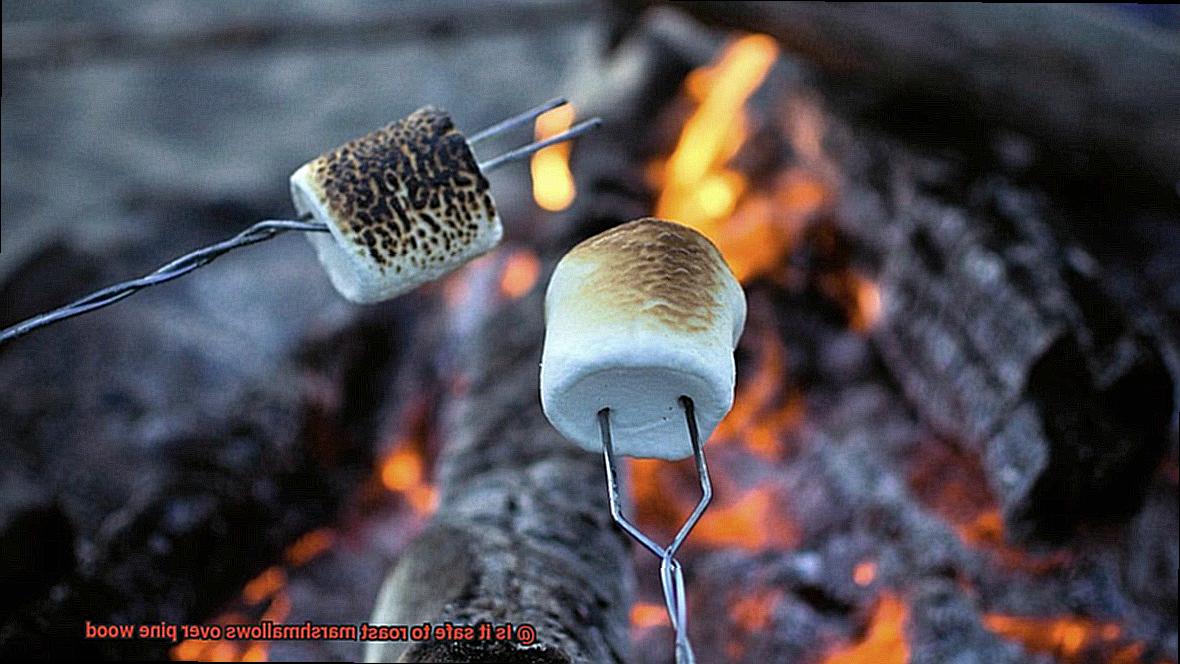
Another key aspect of monitoring a fire while roasting marshmallows is making sure that the flames stay at a safe height. If the flames get too high, they can easily spread and become uncontrollable. Keep the flames low and steady, and avoid adding too much wood at once, which can cause sudden bursts of flame.
Be Prepared
Finally, make sure that you have plenty of water or sand nearby in case of emergencies. If the fire does get out of control, it’s important to have a way to quickly extinguish it before it spreads. A small bucket of water or sand will do the trick.
The Benefits of Using Dry, Aged Pine Wood for Campfires and Marshmallow Roasts
Look no further than dry, aged pine wood. As an expert on the benefits of using pine wood for campfires and marshmallow roasts, I’m here to share with you all the reasons why this wood is the way to go.
One of the major advantages of using dry, aged pine wood is its ability to burn hot and fast. You won’t have to wait hours for your fire to catch, and can quickly get to enjoying your marshmallows. Additionally, burning pine wood produces a pleasing aroma that can enhance the overall ambiance of your gathering. There’s nothing quite like the comforting scent of burning pine on a cool evening.
But that’s not all – pine wood also produces a lot of crackling and popping sounds. These sounds can add an entertaining element to your gathering, and can even act as a natural bug repellent against pesky mosquitoes.
Of course, it’s important to mix different types of woods like oak or maple to create a more balanced and flavorful fire. And always make sure that the wood is fully burned down to ash before roasting marshmallows over it. This ensures that any harmful chemicals or toxins are burned off and do not transfer onto your food.
Potential Hazards of Not Following Safety Guidelines When Roasting Marshmallows Over Pine Wood
While this may add a delightful aroma to your experience, it’s essential to be aware of the potential hazards that can arise if safety guidelines are not followed.
The release of harmful chemicals and toxins when burning pine wood is one of the most significant concerns. Pine wood contains high levels of resin, which can produce thick, black smoke that can be harmful to inhale. The smoke contains chemicals like benzene, formaldehyde, and acrolein, leading to respiratory problems and even cancer with prolonged exposure. It’s crucial to keep your distance from the fire and avoid breathing in any smoke.
In addition to the release of harmful chemicals, there is also the risk of burns and fire hazards when roasting marshmallows over pine wood. Pine wood burns at a higher temperature than other types of wood, causing flames to become too intense resulting in burns or fires. It’s important to control the fire’s size and have proper tools available like a fire extinguisher or bucket of water in case things get out of hand.
Using pine cones or needles as kindling for the fire can also pose a risk. These items can easily catch fire and cause sparks to fly out of the fire pit, potentially causing burns or fires. Proper tools and techniques should be used when starting and maintaining a fire to avoid these hazards.
Conclusion
In conclusion, while roasting marshmallows over pine wood can be a delightful experience, safety must always come first. Pine wood is notorious for its resin content, which can cause the wood to pop and throw sparks, posing a risk of burns. Furthermore, burning pine wood can release harmful chemicals such as creosote into the air, which can lead to respiratory problems and even cancer with prolonged exposure.
To ensure a safe and enjoyable marshmallow-roasting experience over pine wood, use only dry and seasoned wood that has been aged properly. It’s also essential to keep a watchful eye on the fire at all times and never leave it unattended. To minimize the risk of burns or injuries, use long-handled roasting sticks or skewers instead of placing them directly over the flames.
If you’re not comfortable using pine wood, hardwoods like oak or maple are excellent substitutes that provide a safer option for roasting marshmallows. Remember to prioritize safety when enjoying this activity by following proper guidelines and taking necessary precautions.

